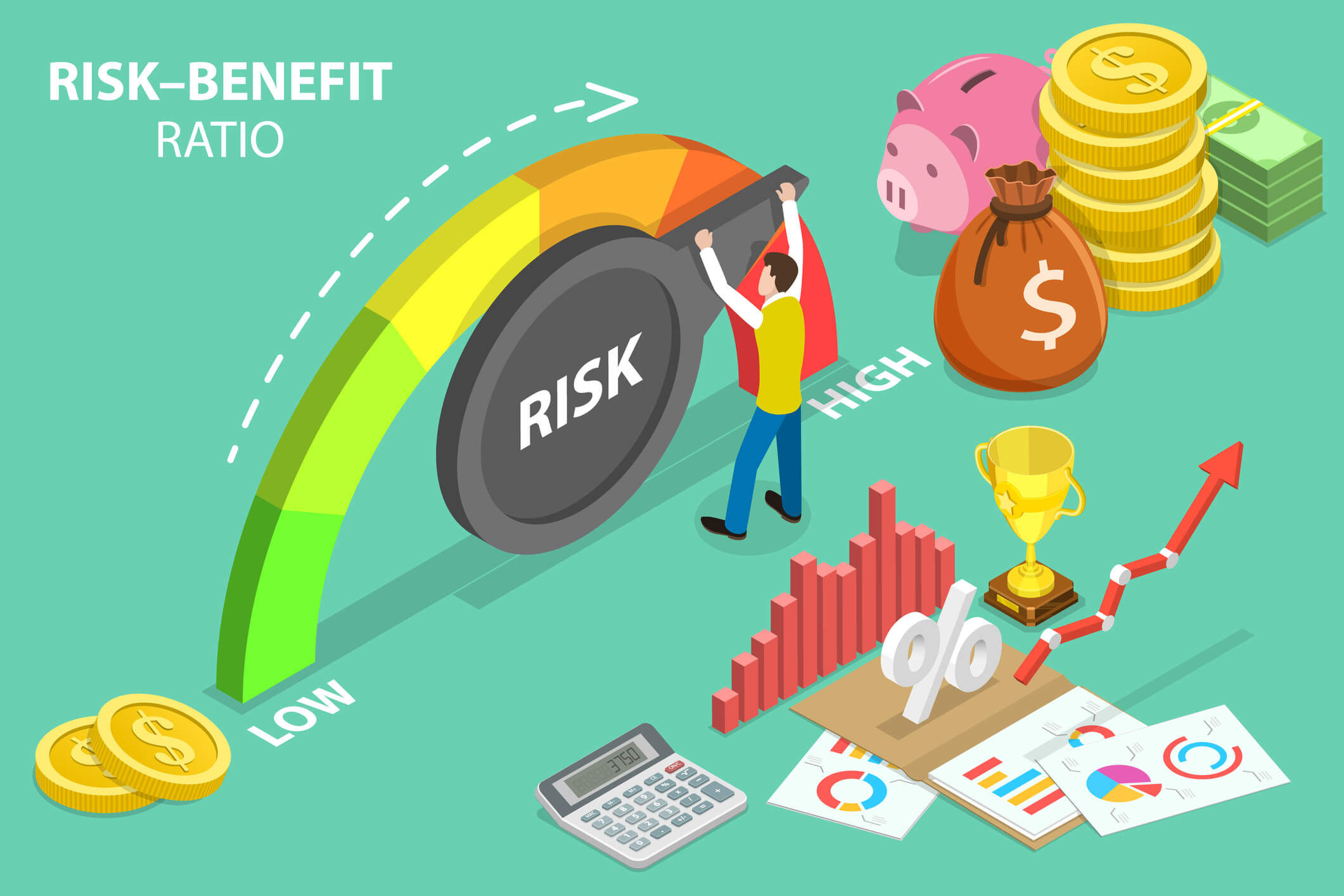The volatility of investment returns that an investor is willing to endure in financial planning. Risk tolerance is essential and often associated with age, although this is not the only determining factor. However, younger people with a longer time horizon can often and are encouraged to take more risks than older people with a shorter time horizon. Equities, equity funds, and ETFs are frequently associated with higher risk tolerance, whereas bonds, bond funds, and ETFs are commonly associated with lesser risk tolerance. However, it would be best not to use age to determine asset class changes.
 Those with higher net worth and higher disposable income can usually afford to take more risks with their investments.
Those with higher net worth and higher disposable income can usually afford to take more risks with their investments.
Key points
- Risk tolerance estimates how much loss an investor is willing to bear in their portfolio.
- It looks at how much market risk an investor can tolerate — stock volatility, stock market fluctuations, economic or political events, regulatory or interest rate changes. All these factors can cause their portfolio to fall.
- Risk tolerance is influenced by a person’s age, investing goals, income, and comfort level.
- An investor who is more active and has a more significant risk tolerance. Is ready to risk more money in exchange for the possibility of making more money than a conservative investor.
- A person with moderate risk tolerance is balancing an aggressive and a conservative investor.

Understanding Risk Tolerance
There are many risk tolerance assessments for investors, including risk-related surveys and questionnaires. As an investor, you can look at the worst-case historical returns for various asset classes to see how much money you could lose safely if your investment had a bad year or a series of bad years. Other factors that affect risk tolerance are the time horizon you must invest, your future returns, and whether you have additional assets such as a house, pension, social security, or inheritance. In general, you can take on more risk with investable assets when you have other, more stable sources of funds.
Brief information
Risk tolerance is distinct from risk tolerance, which refers to the minimum amount of risk an investor must tolerate to achieve their investment goals compared to their time frame and return.
Aggressive risk tolerance
Aggressive investors tend to be well versed in the market. Individuals and institutional investors with a thorough grasp of securities and their biases can buy volatile assets like small-company stocks, which can drop to nothing, or options contracts, whose expiration dates may be worthless. By maintaining a base of risk-free securities, aggressive investors achieve maximum profit with maximum risk.
Moderate risk tolerance
Moderate investors assume some risk to the principal but take a balanced approach with medium-term time horizons of five to 10 years. By combining large-company mutual funds with less volatile bonds and risk-free securities, moderate investors often stick to a 50/50 structure. A common technique is to put half of your portfolio into a dividend-paying growth fund.

Risk tolerance is moderate
Conservative investors accept minimal or no volatility in their portfolios. Often retirees who have been building a cemetery for decades are unwilling to take any risk to their director. A conservative investor aims for guaranteed and highly liquid funds. Risk-averse people choose bank certificates of deposit (CDs), money markets, or US Treasury bonds to generate income and preserve capital.
Determining Your Risk Tolerance
Risk tolerance is an essential aspect of starting to invest. Depending on your age, income, investments, and goals, you will fall into one of five risk categories:
- Very aggressive
- Aggressive
- Balanced
- Conservative
- Very conservative
The easiest method to determine which end of the range you fall into is by age. If you are an adult and just started your career, you will fall on the very aggressive side of the spectrum, and if you are older and nearing retirement, you are probably on the very conservative side. Complete a risk tolerance questionnaire to determine exactly where you fell.
How much risk you’re willing to take is the key to building a portfolio that meets your needs, but you can’t just evaluate it once. Every year or two, you should review your risk tolerance. You should then continue to adjust your portfolio as needed to match your risk tolerance.
 About Complete Controller® – America’s Bookkeeping Experts Complete Controller is the Nation’s Leader in virtual bookkeeping, providing service to businesses and households alike. Utilizing Complete Controller’s technology, clients gain access to a cloud platform where their QuickBooks™️ file, critical financial documents, and back-office tools are hosted in an efficient SSO environment. Complete Controller’s team of certified US-based accounting professionals provide bookkeeping, record storage, performance reporting, and controller services including training, cash-flow management, budgeting and forecasting, process and controls advisement, and bill-pay. With flat-rate service plans, Complete Controller is the most cost-effective expert accounting solution for business, family-office, trusts, and households of any size or complexity.
About Complete Controller® – America’s Bookkeeping Experts Complete Controller is the Nation’s Leader in virtual bookkeeping, providing service to businesses and households alike. Utilizing Complete Controller’s technology, clients gain access to a cloud platform where their QuickBooks™️ file, critical financial documents, and back-office tools are hosted in an efficient SSO environment. Complete Controller’s team of certified US-based accounting professionals provide bookkeeping, record storage, performance reporting, and controller services including training, cash-flow management, budgeting and forecasting, process and controls advisement, and bill-pay. With flat-rate service plans, Complete Controller is the most cost-effective expert accounting solution for business, family-office, trusts, and households of any size or complexity.




